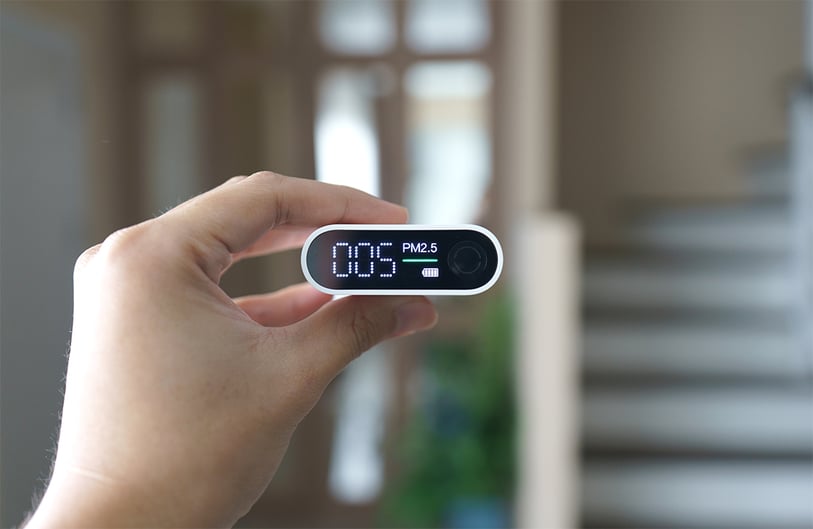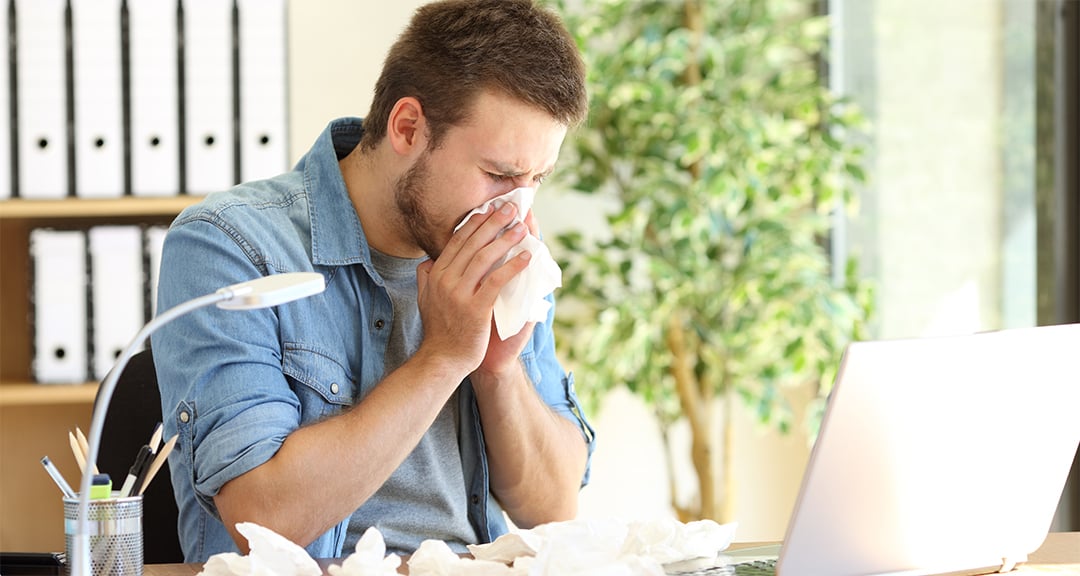Did you know the air inside your home can be two to five times — even up to 100 times — more polluted than outdoor air, according to the American Lung Association?
It's a startling statistic that underscores how much control you truly have over your indoor environment — and why it matters. When poor indoor air quality lingers, you may feel the consequences in sneezing fits, asthma flare-ups, lingering fatigue and those mid-afternoon headaches that just won't quit.
Beyond immediate discomfort, everyday pollutants such as dust mites, pet dander and volatile organic compounds (VOCs) place long-term stress on your lungs and immune system. Taking a proactive approach to cleaner air is one of the simplest yet most meaningful steps you can take toward a healthier, more comfortable home.
Let's explore why indoor air quality deserves a top spot on your home-improvement checklist.
Indoor vs. Outdoor Air Pollution
While city smog gets plenty of press, the difference between indoor and outdoor air pollution is striking. Outdoor pollutants disperse in the open air; indoors, the same contaminants can concentrate in sealed, energy-efficient spaces. Everyday actions, from cooking on a gas stove and spraying a cleaning product to simply lounging on a new sofa that's still off-gassing VOCs, can quickly elevate indoor pollution levels beyond what you'd encounter outside.
The Real Impact of Poor Indoor Air Quality
Indoor air may feel harmless, yet it often harbors pollutants invisible to the eye but potent enough to trigger or worsen health issues. When fine particles and gases accumulate, they inflame airways, aggravate asthma and may weaken your immune response, leaving you more susceptible to seasonal colds and fatigue. Over time, persistent exposure can contribute to chronic respiratory problems and even cardiovascular strain.
Poor air quality doesn't just affect the lungs. Studies link stale, polluted indoor air to:
- Restless sleep.
- Slower cognitive processing.
- Reduced productivity.
If you're waking up groggy despite a full night's rest, or finding it hard to focus when afternoon rolls around, the culprit might be the very air you breathe.
Common Sources of Indoor Air Pollution
Knowing where pollutants originate is the first step toward eliminating them:
- VOCs released by cleaning supplies, paints and pressed-wood furniture can linger for months, irritating eyes, throat and lungs.
- Biological contaminants such as pet dander, dust mites and mold spores thrive in damp, poorly ventilated spaces.
- Cooking fumes — especially from high-heat frying or grilling — emit ultrafine particles and nitrogen dioxide, adding to indoor air pollution.
- HVAC shortcomings, like clogged filters or leaky ducts, recirculate pollutants rather than removing them.
- Outdoor contaminants seep in through doors and windows, particularly during wildfire season or high-pollen months.
 Cooking fumes from high-heat frying or grilling emit ultrafine particles and nitrogen dioxide that add to indoor air pollution.
Cooking fumes from high-heat frying or grilling emit ultrafine particles and nitrogen dioxide that add to indoor air pollution.Addressing these sources sets the stage for cleaner, fresher air at home.
Signs Your Air Quality Might Be Off
Your home often whispers clues long before poor indoor air quality becomes a full-blown problem. Here are four signs to monitor:
- If you're dusting more than usual or noticing a film of particles returning within days, airborne pollutants are likely circulating unchecked.
- Allergy symptoms that mysteriously worsen indoors—sneezing, itchy eyes or a stubborn cough—point to irritants such as dust mites or pet dander.
- Stuffy rooms and odors that seem to linger after cooking or cleaning suggest pollutants aren't venting out.
- Mid-day sluggishness or recurring headaches can stem from elevated carbon dioxide or VOC levels rather than inadequate sleep.
Testing Air Quality in Your Home
Here are three ways to learn more about the air quality in your home:
- Use an indoor air quality monitor: These compact devices track PM2.5 (fine particles), VOCs and humidity — sometimes carbon dioxide, too — helping you spot trends in real time. A monitor will alert you when particle counts rise after vacuuming or when humidity creeps above 60%, conditions that encourage mold.
- Try DIY test kits: If you prefer a hands-on approach, DIY test kits are available for mold, radon and even formaldehyde. They're budget-friendly, though results can be slow and require careful sampling.
- Lean on professional support: A professional inspection costs more up front, yet delivers comprehensive readings and personalized recommendations, ideal for older homes or households with ongoing respiratory issues.
 An indoor air quality monitor tracks PM2.5, VOCs, humidity and sometimes carbon dioxide to help you spot trends in real time.
An indoor air quality monitor tracks PM2.5, VOCs, humidity and sometimes carbon dioxide to help you spot trends in real time.Small changes in daily habits and the right technologies can dramatically reduce indoor air pollution and deliver cleaner air throughout your living space. Consider the following ten strategies as a flexible roadmap:
1. Improve ventilation
Open windows when weather and outdoor air quality cooperate, and run exhaust fans while showering or cooking. For consistent, energy-smart airflow, upgrade bathrooms or laundry rooms with WhisperGreen Select™, a quiet vent fan that automatically adjusts to humidity and keeps harmful particles from building up.
2. Use air purifiers with HEPA filters
A true HEPA air purifier captures 99.97% of airborne particles down to 0.3 microns — pollen, pet dander and even some bacteria. Where filter maintenance isn't practical, a ceiling-mounted device like WhisperAir Repair™ provides continuous purification without filter replacements.
3. Change HVAC and purifier filters regularly
A dirty air filter forces your furnace or air conditioner to recirculate dust and VOCs. Check filters monthly and swap them at least every 90 days — or sooner during peak allergy seasons.
4. Reduce indoor pollution sources
Opt for natural or low-VOC cleaning products, avoid aerosol sprays and choose solid-wood or low-emission furniture when possible. Source control is the Environmental Protection Agency's (EPA) top recommendation for how to clean the air in your home.
5. Control humidity levels
The EPA recommends aiming for 30–50% relative humidity to discourage mold and dust mites. Dehumidifiers or smart HVAC integrations can help maintain that sweet spot year-round.
6. Clean consistently
Vacuum carpets with a HEPA-equipped machine, damp-dust hard surfaces and launder curtains or bedding in hot water. These simple steps cut down on airborne particles that fuel poor indoor air quality.
7. Clean your air ducts
If you notice musty smells from air vents or visible dust on supply grilles, schedule a professional duct inspection. Removing debris keeps contaminants from circulating every time the system runs.
8. Add houseplants
Peace Lily, Spider Plant and Snake Plant look great and can absorb small amounts of CO and VOCs, though they aren't a substitute for mechanical filtration.
9. Keep pets groomed and floors hair-free
Regular brushing plus allergen-proof covers on bedding curtail dander before it reaches your lungs.
10. Remove shoes at the door
A simple shoe rack or cubby prevents outdoor pollutants — pesticides, road dust and pollen — from spreading across floors.
Indoor Air Quality FAQs
Curious how everyday choices influence the air you breathe? These quick answers clear up common misconceptions and help you refine your clean-air strategy:
What's the difference between an air purifier and a dehumidifier?
An air purifier pulls room air through filters or purification technology to trap or neutralize particles, while a dehumidifier extracts moisture to keep humidity within the 30–50% range. Lower humidity can hinder mold growth, but it does not remove dust, smoke or allergens the way an air purifier does.
Many homeowners pair the two for complementary benefits.
Can air fresheners improve indoor air quality?
Most plug-ins or sprays only mask odors and often add VOCs to the mix. If you rely on scent, choose essential-oil diffusers and ventilate well, but remember cleaner air is typically odor-neutral.
How often should I run my air purifier, and how do I know it's working?
For best results, operate portable air cleaners continuously on their auto or low setting. Check the device's filter indicator or use an indoor air quality monitor to watch PM2.5 levels drop. Maintenance-free options like Panasonic WhisperAir Repair™ work around the clock, so there's nothing to replace.
Do ceiling fans help with air quality?
Fans keep air moving, which can prevent stagnant pockets of CO, but they do not remove pollutants. Pair fans with filtration or ventilation to achieve cleaner air rather than simply stirring contaminants.
Can cooking indoors affect air quality?
Absolutely. Gas stoves release nitrogen dioxide and fine particles, while searing and frying send grease aerosols into the air. Always run a range hood or nearby exhaust fan and crack a window if the outdoor air quality is good.
Is opening windows always a good idea for clean air?
Natural ventilation is great when pollen counts and outdoor pollution levels are low. During wildfire smoke events or high-ozone days, keep windows shut and rely on HEPA filtration or an energy recovery ventilator (ERV) that filters incoming air.
Does furniture off-gassing affect air quality?
Yes. New couches, pressed-wood cabinets and some mattresses emit VOCs for weeks or months. Choose low-VOC certification labels, let new items off-gas in a garage or patio first and ventilate rooms until any chemical smell fades.
Can smart home technology improve air quality?
Smart sensors can automate fans, purifiers and humidifiers based on real-time pollutant readings, ensuring optimal operation with minimal effort. Panasonic's OASYS platform integrates ventilation, purification and monitoring for streamlined control.
Take the First Step Toward Healthier Air at Home
Cleaner air is more than a comfort upgrade — it's a foundation for better sleep, sharper focus and long-term wellness. By monitoring pollutant levels, addressing problem sources and adopting proven solutions, you protect your family from the hidden effects of indoor air pollution.
If you'd like guidance on selecting the right mix of ventilation and purification, or you're curious how an energy recovery ventilator fits into your home, explore Panasonic's indoor air quality solutions and speak with a representative who can tailor recommendations to your space.



